calsfoundation@cals.org
Elsie Mari Bates Freund (1912–2001)
Elsie Mari Bates Freund was a studio art jeweler, watercolorist, and textile artist. In 1941, she and her husband, Louis Freund, established an art school in Eureka Springs (Carroll County) and were major players in preserving and making that town a haven for writers and artists.
Elsie Bates was born on January 12, 1912, on a 1,500-acre game preserve in Taney County, Missouri, near the small community of Mincy. She had two sisters. Her father, Ralph C. Bates, who was the superintendent of the game preserve, was of Irish and Cherokee descent. Bates was proud of her Cherokee heritage and claimed that Indian lore kept her close to nature.
Bates proclaimed she wanted to be an artist at age five. She attended a one-room schoolhouse there in Taney County, where the game preserve owner’s daughter encouraged her interest by bringing her books and art supplies. In her teens, Bates boarded with a family in Girard, Kansas, so that she could attend high school. Her parents later moved to Branson, Missouri, and Bates graduated in 1929.
Bates then taught for one year in a one-room schoolhouse—apparently, she was participating in a special program designed to get teachers back into the rural schools and so was obligated to teach in exchange for her high school education. She was working to earn enough money to enroll in the Kansas City Art Institute. After one year there, she returned to the resort town of Branson and opened a gift shop, where she made trophies by molding live fish in plaster of Paris and using the mold to cast a plaster model of the fish, which she later painted, as well as jewelry that she made out of walnut shells.
In 1936, she met H. Louis Freund, a dashing mural painter touring the Ozark Mountains in a Model T Ford to observe and record a way of life that was fast disappearing. He courted Bates for three years while serving as artist in residence at Hendrix College in Conway (Faulkner County). In 1939, he saved $300 and bought Hatchet Hall, a large boarding house in Eureka Springs once owned by the famous temperance advocate Carry Nation from 1909 to 1911, saving it from being razed and sold for wood.
Bates married Freund in Hatchet Hall on July 6, 1939, and they moved into the old house and turned it into the summer Art School of the Ozarks, an art school they operated from 1940 to 1951. Her husband taught painting and drawing while she taught classes related to crafts, such as weaving and design. Their influence helped to create the art community for which Eureka Springs is still known. They had no children but had the distinction of being “godparents” to several close and personal friends.
Both artists provided inspiration and encouragement to their students and entertained guests frequently. Their biggest accomplishment was as a role model for married couples living creative, artistic lives through a time of historical adversity. Since the Freund school operated only during summers, Elsie was able to study more, taking her first ceramics class at the Wichita Art Association in Kansas. This is where she began to develop her unique jewelry-making process that combined clay, glass, and later—at the suggestion of a Florida shop owner—silver. Her husband, Louis, named the works “Elsaramics,” but Elsie shortened the name to “Elsa,” which she stamped on her jewelry. (Thereafter, “Elsie” referred to her paintings, while “Elsa” referred to her craft.)
In 1957, the national craft outlet America House in New York City accepted Freund’s jewelry, which was advertised in the New York Times and the New Yorker. After nearly seven years, Freund grew weary of filling repeat orders and discontinued the line in 1964. She and her husband went on a five-month Mediterranean tour, using the proceeds from her jewelry sales, and spent some of the time doing research and painting.
While Freund was turning her jewelry into a business, she was also experimenting with tie-dye techniques. Already proficient in watercolor, in 1953, she was accepted into the National Watercolor Society based on a peer review of her work and was the subject for a magazine article on her tie-dye technique. But her unique jewelry remains her most important work. She is remembered as one of the pioneer studio art jewelers in the United States. This group broke the usual mold by experimenting with modern design and alternative materials—she made jewelry out of clay, glass, and copper and aluminum wire, rejecting the machine and principles of mass production when the expected norm at that time was to set precious stones in precious metals of silver and gold. Freund remained in the shadow of her husband’s work. Her painting did not attract as much attention as her jewelry, which was recognized late in her life and is represented in more than a dozen prestigious museums in the United States, as well as a half dozen national and international museums in the United Kingdom and Europe. She was awarded the State of Arkansas Certificate of Recognition in 1991.
In 1995, Freund moved to Parkway Village, a retirement community in Little Rock (Pulaski County). She died on June 14, 2001, and Richard Earl Grimes, chief of the Cherokee Nation, conducted her memorial service. A second service was held in Eureka Springs, where she is buried.
For additional information:
DuBois, Alan. “Elsa Freund: American Studio Jeweler.” Exhibition Catalogue. Little Rock: Arkansas Arts Center, 1991.
Ebendorf, Robert. “Elsa Freund and Elsaramic Jewelry.” Metalsmith 110 (Summer 1990): 23–26.
Louis and Elsie Freund Papers. Special Collections. University of Arkansas Libraries, Fayetteville, Arkansas.
Alan Du Bois
Benton, Arkansas
 Arts, Culture, and Entertainment
Arts, Culture, and Entertainment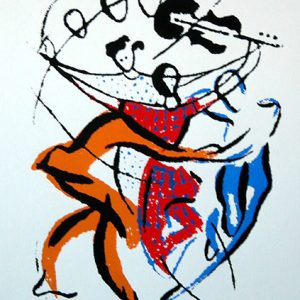 Dancers With Fiddler
Dancers With Fiddler  Elsie Freund
Elsie Freund  Freund Print
Freund Print 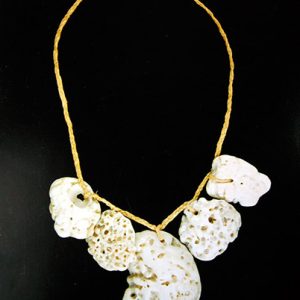 Freund Necklace
Freund Necklace 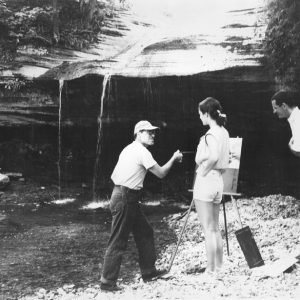 Louis Freund
Louis Freund  Freunds Dancing
Freunds Dancing 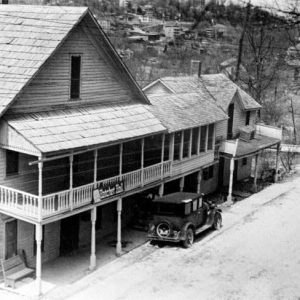 Hatchet Hall
Hatchet Hall 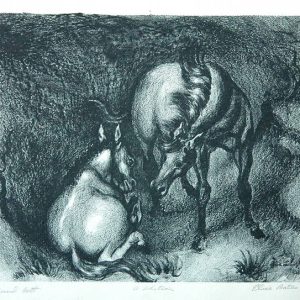 Mare and Colt
Mare and Colt 




Comments
No comments on this entry yet.